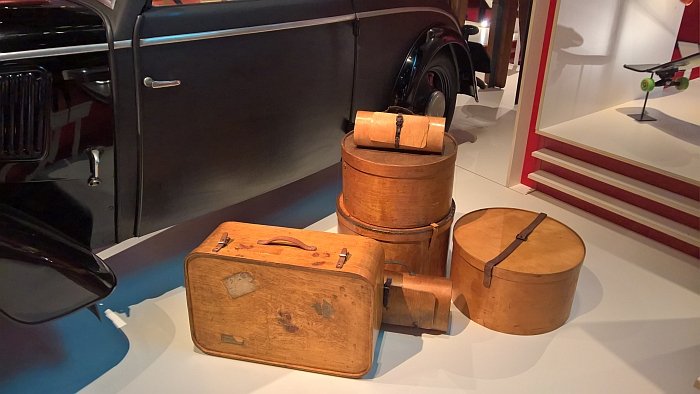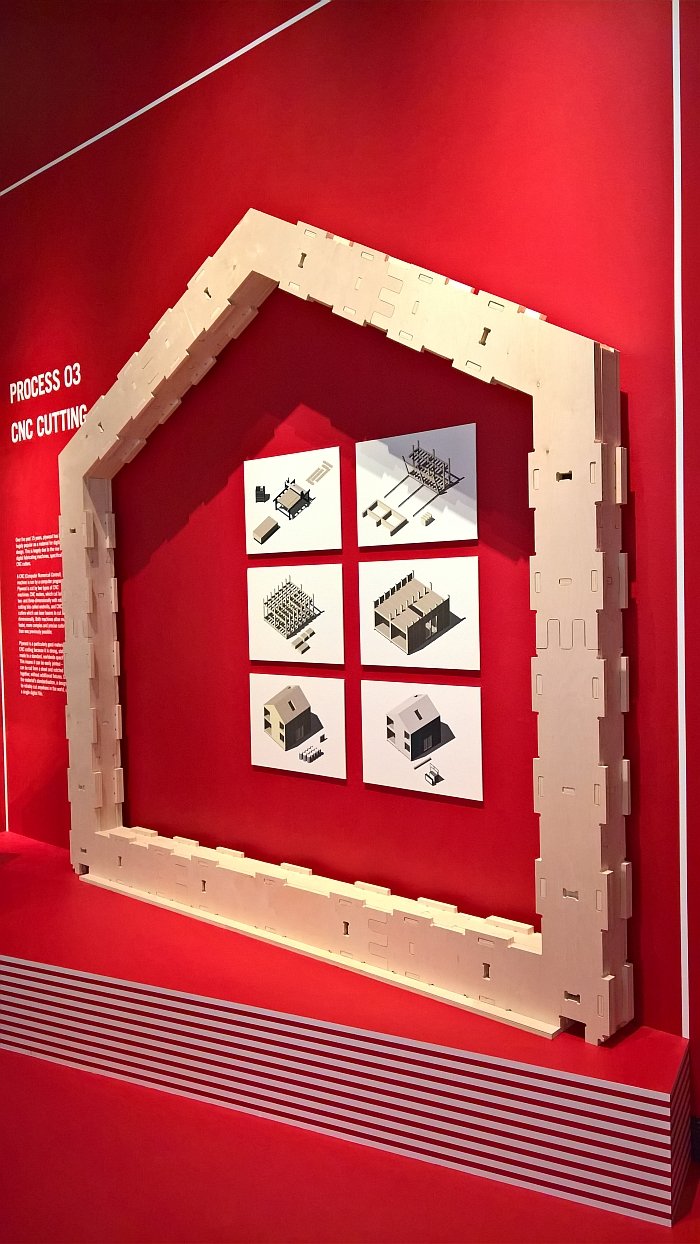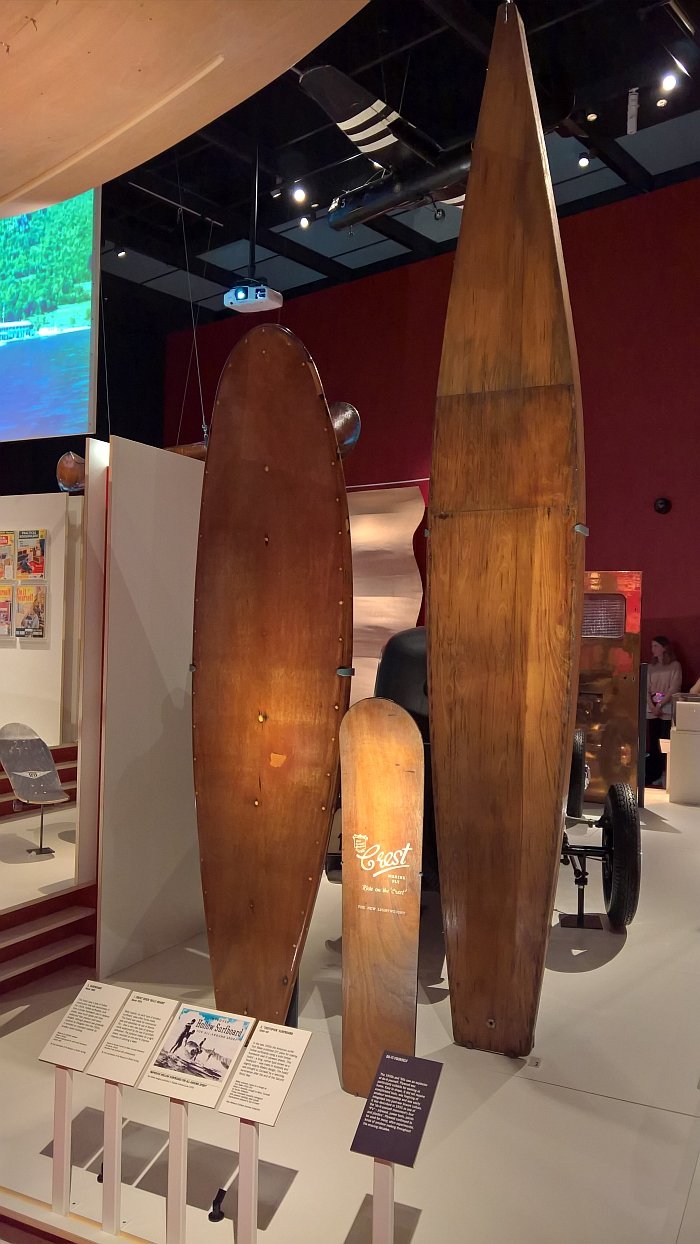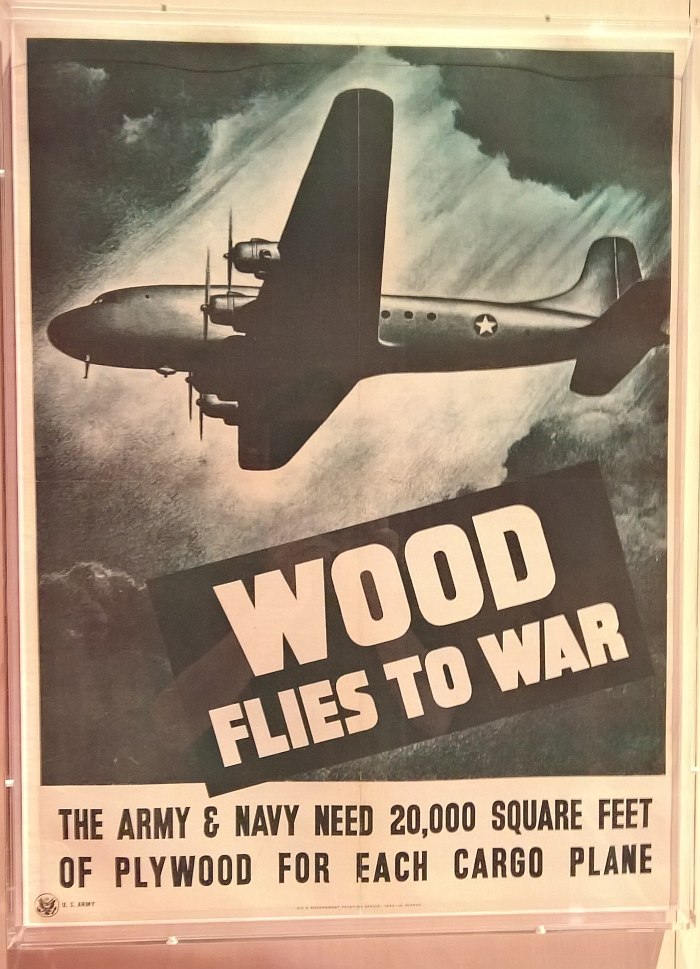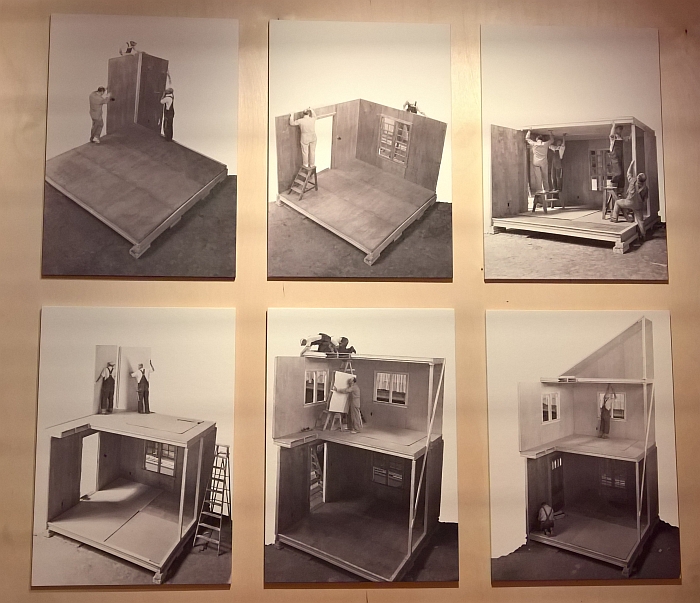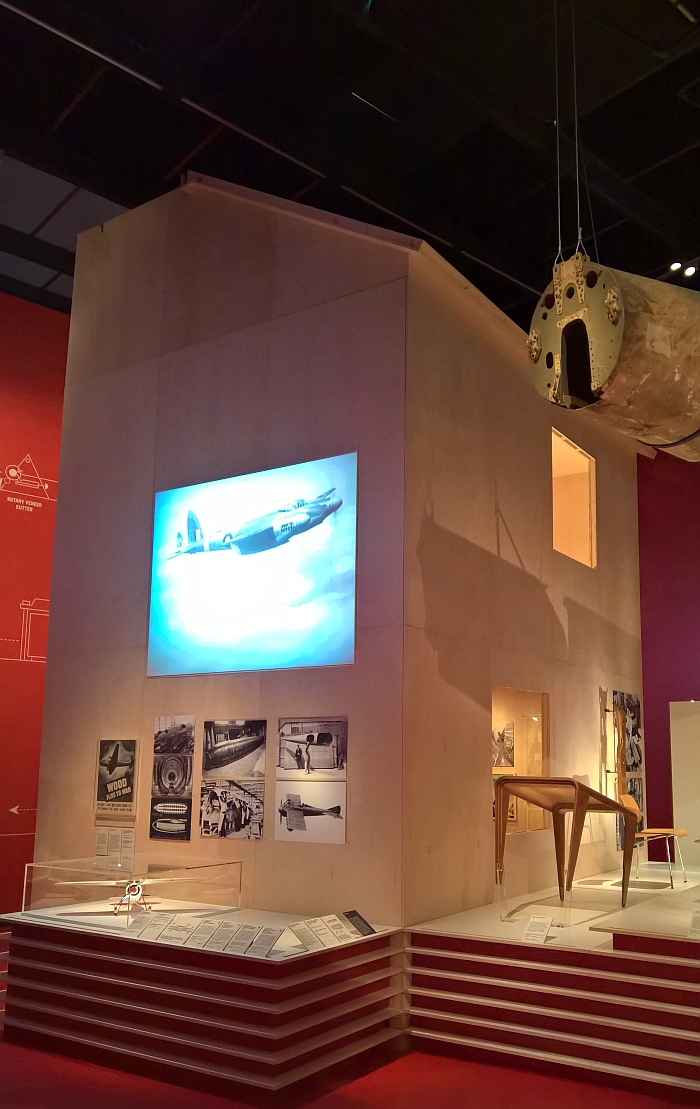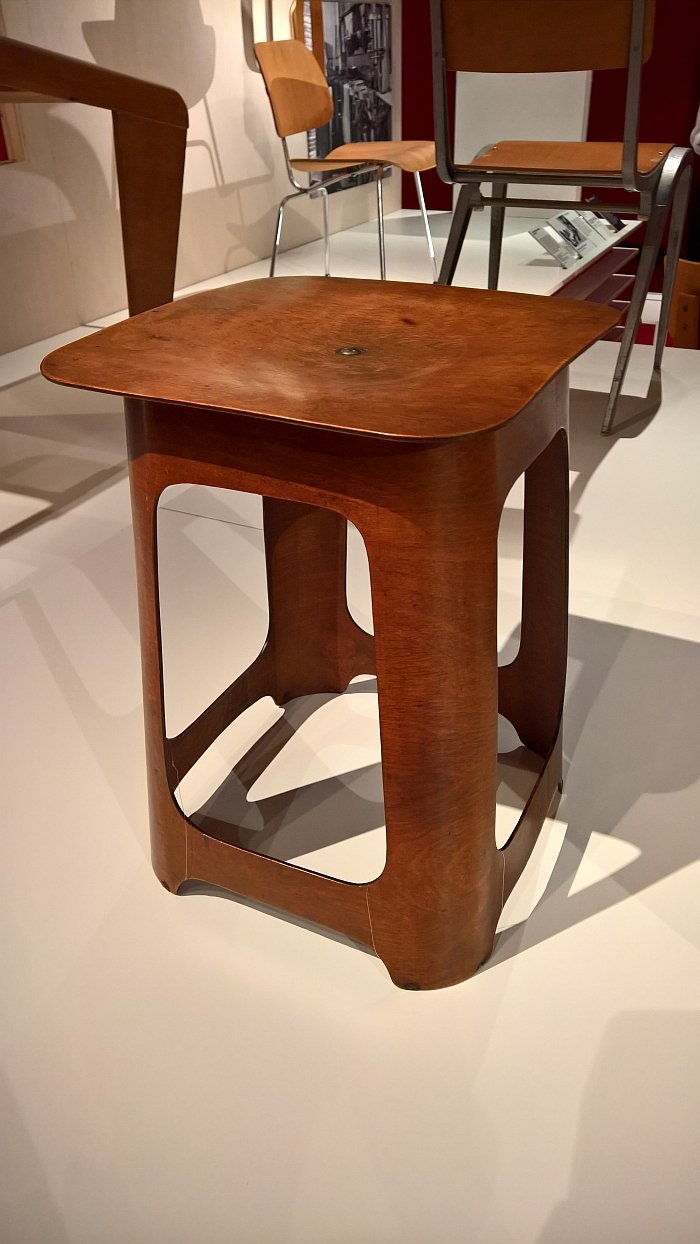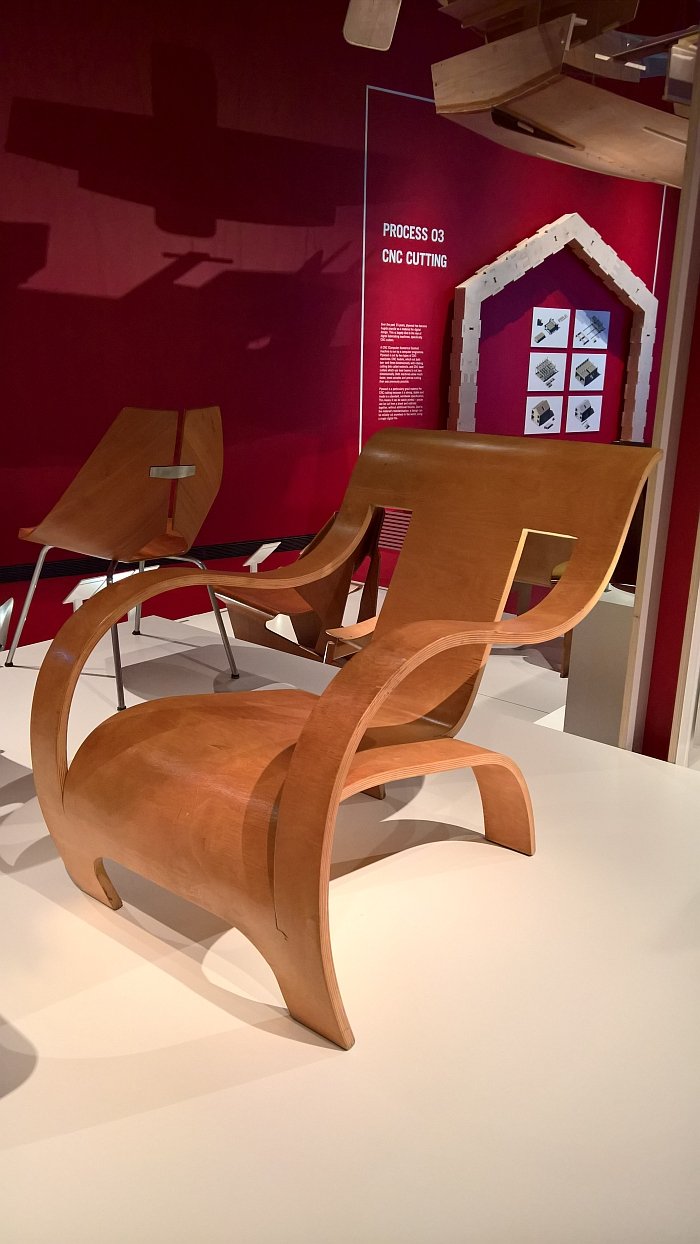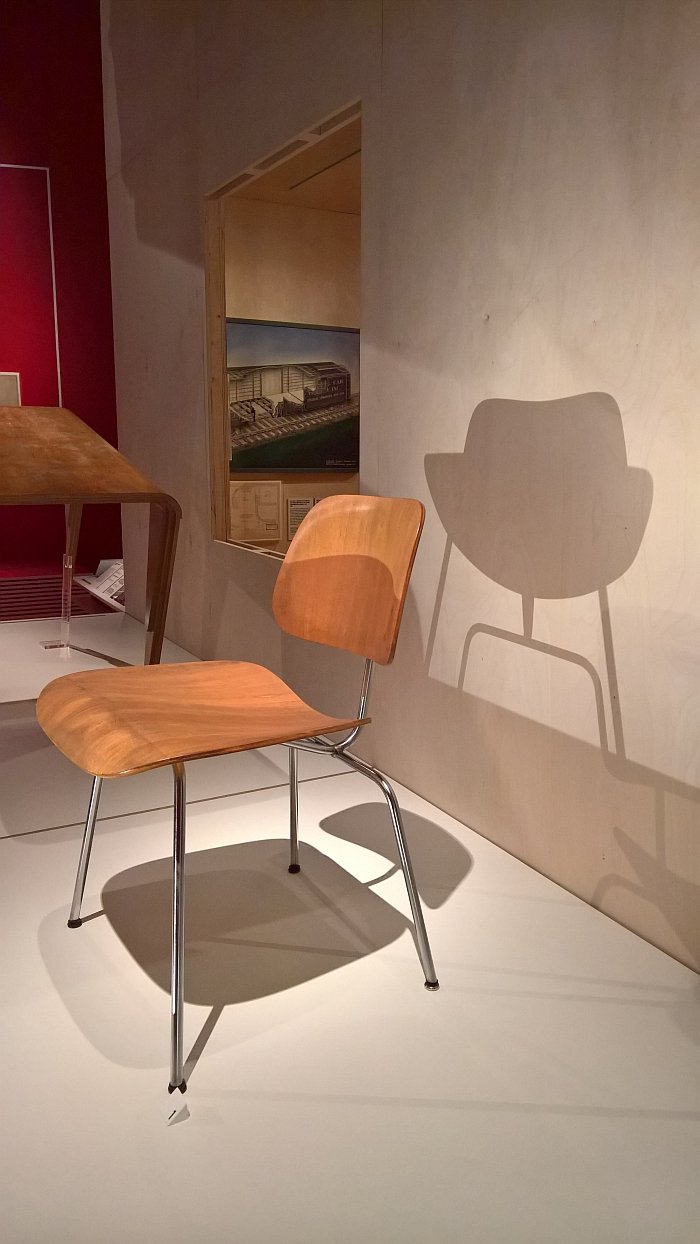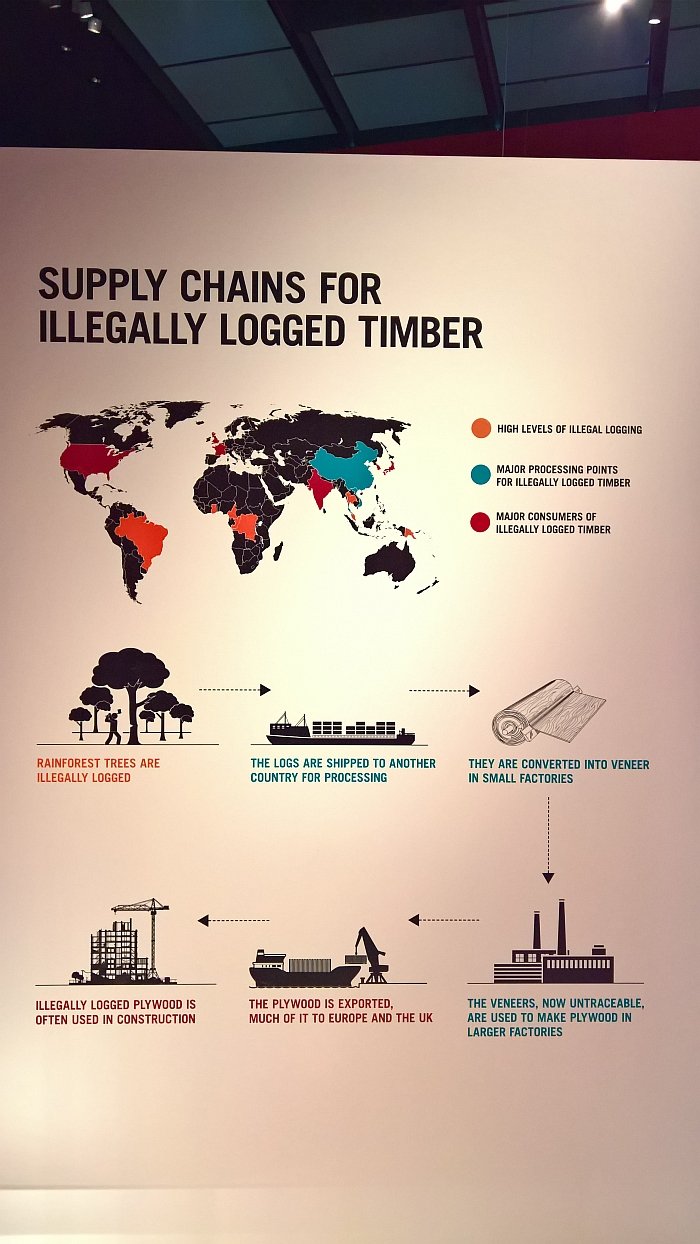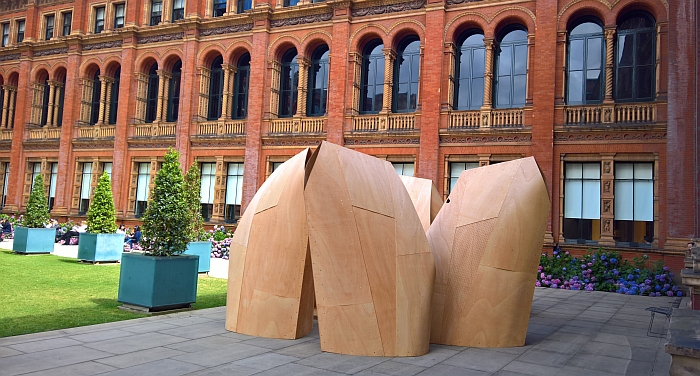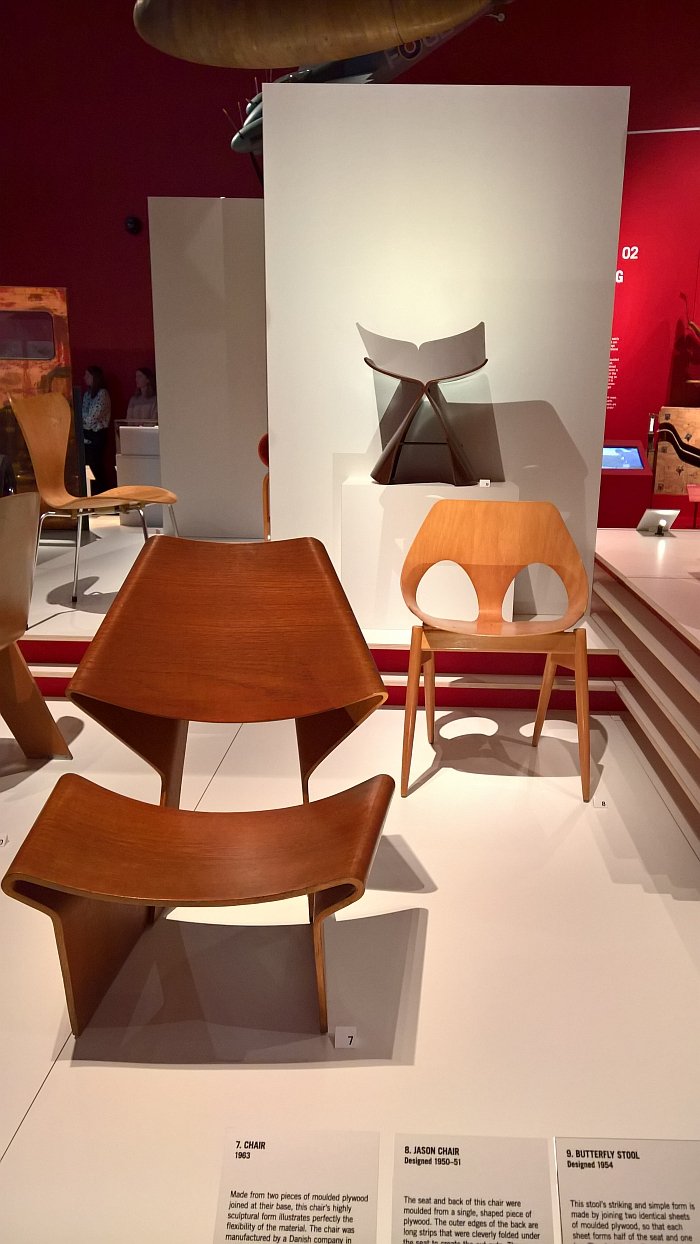Few materials can have claimed to have influenced architecture and design in quite the way plywood has.
And thereby remained as anonymous as plywood, easily overlooked in public and barely researched in an academic context as it is.
With the exhibition Plywood: Material of the Modern World, the V&A Museum London aim to redress both.
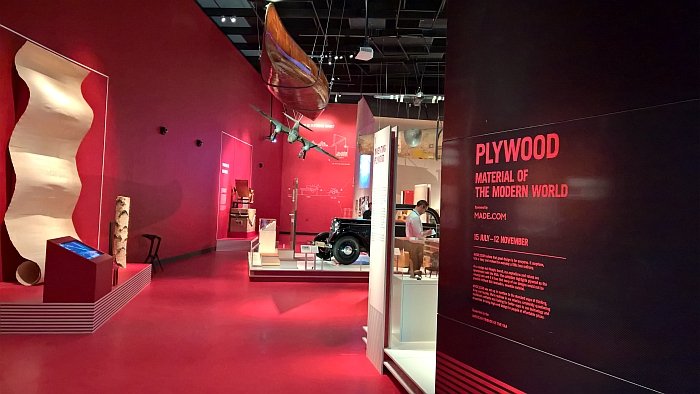
"For a long time I have been aware that there wasn't that much published about the history of plywood, so I started investigating, and discovered that there was no published history of plywood" explains exhibition co-curator Christopher Wilk the background to the exhibition, "which intrigued me, and the more I researched the more surprising, and long forgotten, things I discovered"
Plywood: Material of the Modern World is the telling of that surprising, forgotten history.
Starting from the middle of the 19th century Material of the Modern World takes the visitor on a tour through over 150 years of plywood, and thereby on a journey through not only 150 years of design and architecture history but 150 years cultural, social and economic history. With all the twists and turns of fate, fortune and fashion that entails.
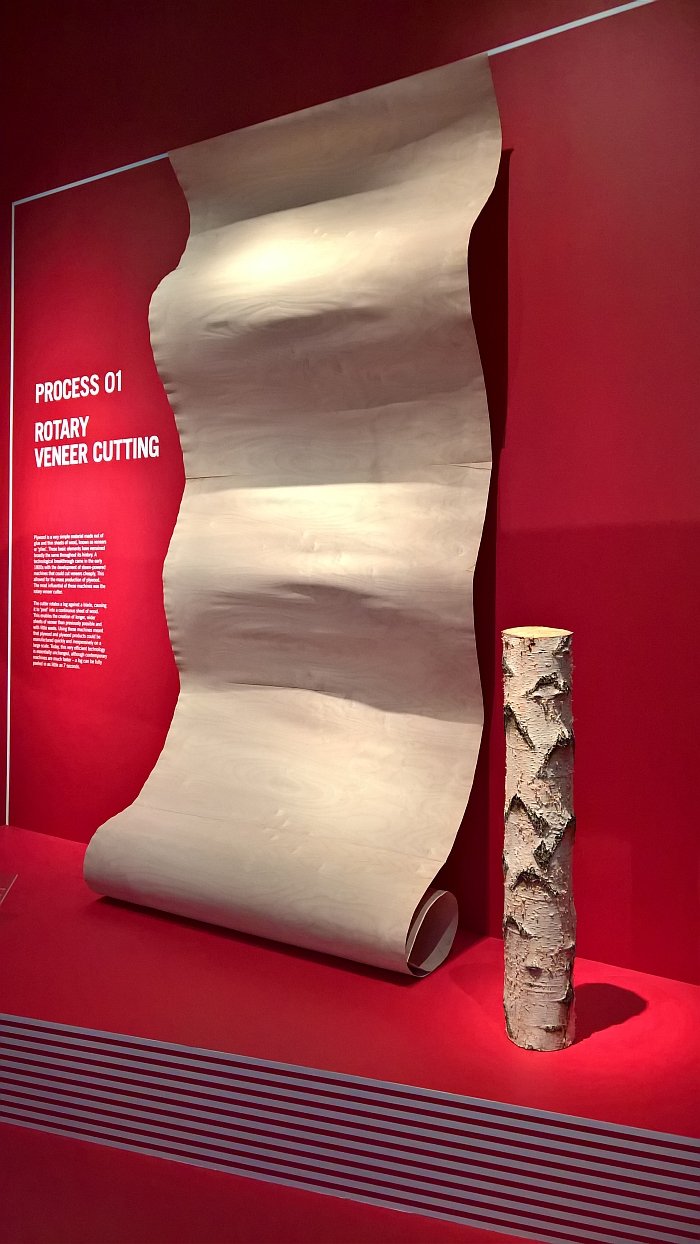
The earliest forms of plywood type materials were known in ancient Egypt from around 2600 BC, and whereas various types of plywoods have been used throughout the intervening centuries, the contemporary story of plywood begins in the 1830s with the development of the mechanised rotary veneer cutter, in effect a giant potato peeler which transforms logs into metre long lengths of thin wood. These veneer sheets are subsequently glued together to create plywood boards.
Originally patented in Russia the rotary veneer cutter quickly spread globally, revolutionising veneer production as it went, and that with elan; according to Christopher Wilk, in an 1851 interview unearthed during the research a former veneer cutter claimed he had retired because there was no longer any hand-cut veneer being produced in the UK.
Thus at the start of the industrial age plywood suddenly appeared as viable, cost-effective, mass market alternative to metals, and the engineers and architects of the day quickly realised that the material's inherent lightness, strength and mouldability, meant that its uses were limited only by their imagination.
And if they had one thing, it was imaginations.
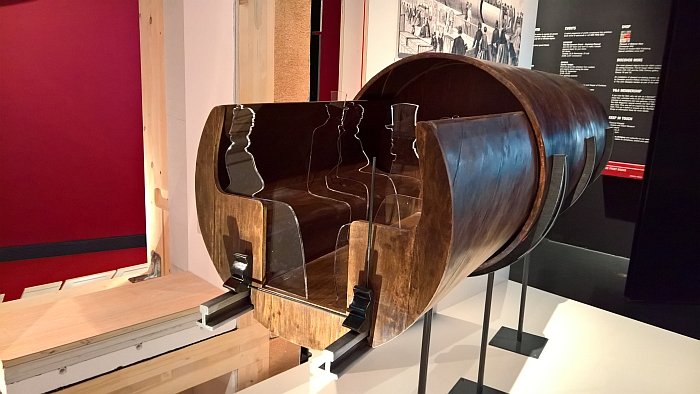
Plywood's many properties make and made it particularly suitable for transportation design and Material of the Modern World correspondingly features a rich array of boats, canoes, cars and train carriages either constructed from or incorporating plywood, in addition to numerous examples of its use in aviation; including the development of the now standard streamlined tapered aircraft tail section, a form first developed in plywood at the start of the 20th century at a time when all other aircraft tails were still stubbornly, and unaerodynamically, quadratic. Plywood’s versatility however offered the possibility to create new forms.
In addition to transportation, plywood increasingly became an important construction materials, for all in America and for all in context of the Depression of the 1930s and subsequent war years when, as Material of the Modern World neatly explains, the need was for low-cost, flexible and quickly built homes. Low-cost, flexible and quick homes such as those developed by the US Forest Products Laboratory, FPL, and which are documented in the exhibition via photos, documents, and a reconstruction of a 1936 FPL showhouse.
Beyond, as in far, far beyond, such, and other familiar, applications of plywood, Material of the Modern World also presents some of the more experimental, left-field, examples of that which designers, architects and engineers have realised can be achieved with plywood including luggage, swim suits - no honest - and an elevated plywood railway proposed in 1867: essentially two long plywood tubes, passengers sitting inside the inner tube which travelled along the outer tube, propelled by fans. Allegedly some 75,000 people tested a model in New York. Which says a a lot about the adventurousness of our 19th century ancestors.
Not that the ready availability of plywood was all good, aside from the unemployed veneer cutters came an unexpected consequence of industrial veneer production, "The mechanisation of saw cutting around 1790 and 1810 and the development of the mechanical rotary peeler in the 1830s caused the price of veneer to plummet", explains Christoph Wilk, "meaning that for the first time in history cheap furniture is veneered, previously it had only been the most expensive furniture. But the new furniture doesn't last long, because its cheap, and so the public starts to associate veneer with poor quality"
And by extrapolation to associate plywood with poor quality. A stigma which meant that for many decades plywood was often used without the consumer necessarily being aware of the fact
Something that would radically change post World War II
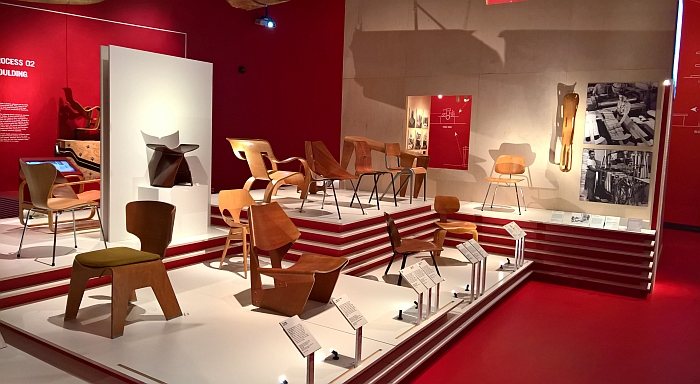
If the rotary cutter enabled veneer and thus plywood to be be produced en mass, technological improvements, and for all better quality glues, meant that in the course of the 1920s and 30s the quality of moulded plywood improved; developments which the furniture industry took a very particular interest in
And which, in effect, led to a rehabilitation of the reputation of plywood.
Presenting examples of plywood furniture, for all chairs, by the likes of, and amongst many, many others, Egon Eiermann, Arne Jacobsen or Grete Jalk, Material of the Modern World also features a table prototype by Marcel Breuer and a collection of 1930s clothes hooks and door handles from the Deutsche Werkstätten Hellerau and attributed to Bruno Paul: and in doing so allows for a very nice reappraisal of the place of arguably the most famous proponents of plywood furniture, Charles and Ray Eames, in the (hi)story of plywood. "Charles and Ray Eames were great designers, but they didn't pioneer the use of plywood, they didn't pioneer the use of plywood moulding as is often said, nor did they pioneer the use the inflated rubber bag to mould plywood, it was use in 1919 by the Loughead brothers who made aircraft using a big rubber bag in a cement mould. And so there was a lot of pioneering plywood work done before the Eames. What the Eames were however, were the most influential furniture designers in the second half of the twentieth century, and one sees the number of designers who, following them, started working in plywood"
An influence arising, principally, on account of the Eames aesthetic we venture, and can one say the Eames's took the process that Alvar Aalto had started and developed it further?
"Very much so", replies Christopher Wilk, "and what they also did is they domesticated plywood, the brought it into the home, and they did that much more successfully than for example Aalto. Alvar Aalto's furniture was never truly mass produced, and generally speaking before the 1940s moulded plywood furniture wasn't a feature of home furnishings. Or at least not visible as such, with Victorian moulded plywood furniture no one could see that it was plywood!"
Thus, as much as explaining the (hi)story of plywood Material of the Modern World also neatly reminds us that (hi)story of product design is as much about materials and processes as it is about cultural, social or economic factors, or even about prevailing tastes. Or perhaps better put, is about the inter-relationship between materials, processes and the social/cultural/economic realities: without the successive technical improvements in and understanding of the processes and materials, new types of products simply wouldn't have been possible. And without conditions which allowed them to become established they would today be curiosities rather than celebrated.
And thus a nice reminder that a genuinely endearing piece of furniture is rarely just a pleasing form.
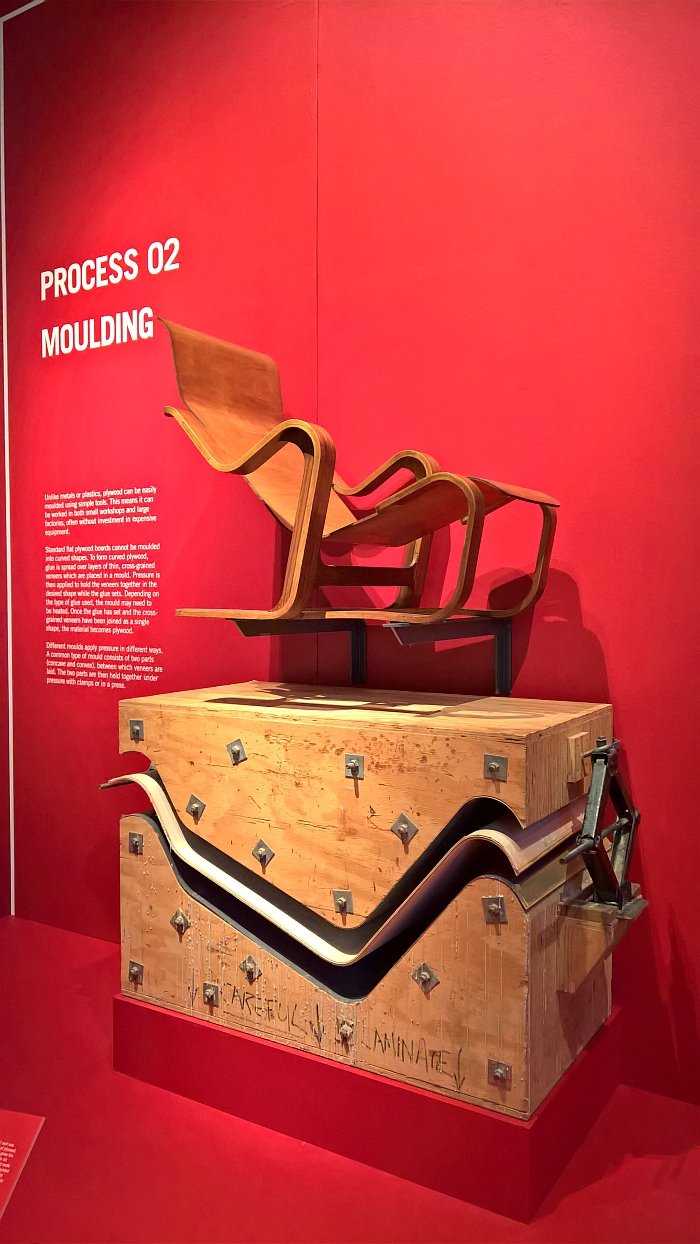
Linear as the (hi)story of the development of plywood is, it is also slightly helical, assuming such is possible; specifically, whereas in the mid 19th century plywood was used in a moulded form, by the the late 19th, early 20th century it was being used predominately as flat sheets, for example in the tea crates that underscored the British Empire or as part of the chassis of cars from the German manufacturer DKW, before the modernists started moulding again, and today those contemporary, digital, makers who use plywood are back to sheets.
Material of the Modern World ends with not only a look at plywood as a material of the digital age and the possibilities opened up by open-source, rapid processes such as CNC cutting, but also construction systems based on the principles of plywood such as Laminated Veneer Lumber or Cross-Laminated Timber, while, and most pleasingly, the exhibition also looks at plywood production from illegally logged timber, and thus the environmental implications of plywood as a material in a capitalist world. On a more positive note Material for the Modern World also discusses new developments which allow for the production of veneer from previously unsuitable coconut palms, thus allowing for new sources of income for rural populations in, for example, pacific regions
Developments which pose the obvious question about plywood's future?
For Christopher Wilk the answer is clear.
"Despite the fact that numerically sales of plywood have been eclipsed, first in the 1970s by MDF and then in in the 1980s by OSB, Oriented Strand Board, they can't do everything that plywood can, nor do they have the beautiful surface appearance of plywood, and that is the reason that since the late 1980s architects and interior designers have increasingly used plywood, because they like the way it looks, and I don't see that changing"
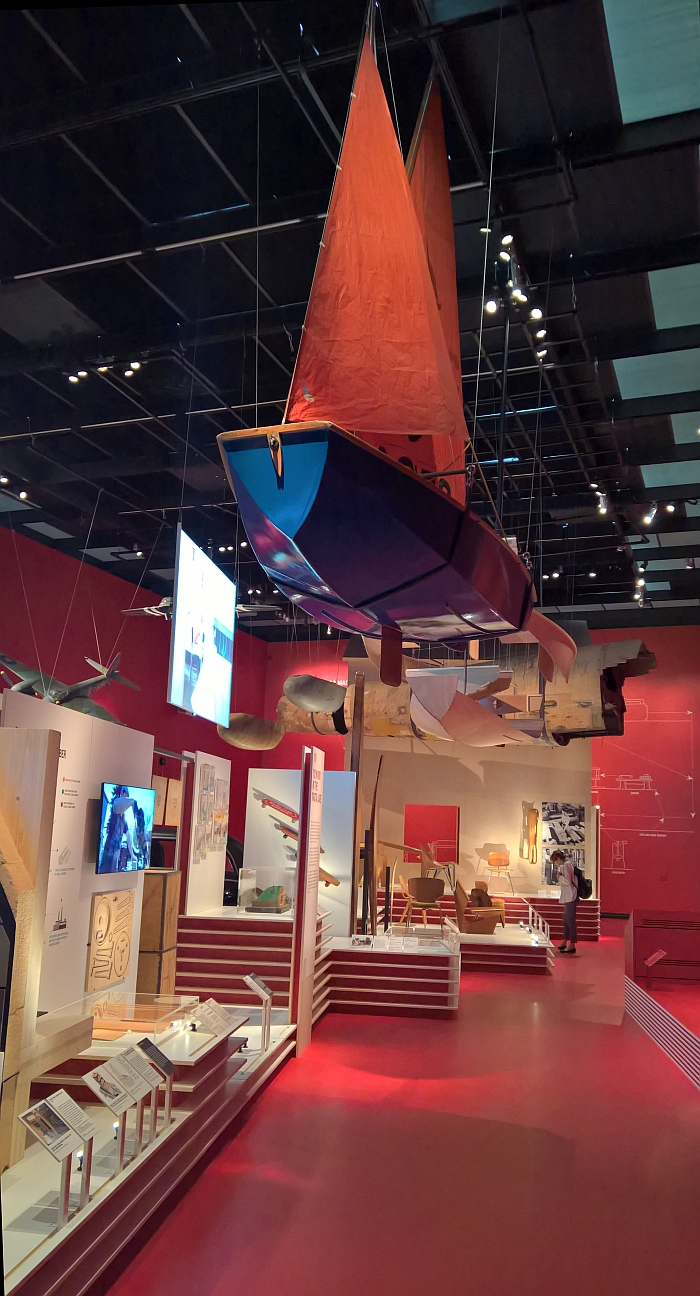
As an exhibition about one material, Material of the Modern World could very quickly become geeky and nerdy, if we're honest we viewed it very much from the nerd perspective, but we're freaks, ignore us, for normal visitors keen to learn more about plywood, Material of the Modern World is a clearly designed and accessible exhibition in which you cover a lot of ground without you really being aware that you have. The mix of general and specific information panels, informing without getting unnecessarily deep and technical, and so, for example, whereas the exhibition explains the importance of new glues in the development of contemporary plywoods, it doesn't well, get stuck on the subject. Rather skips sprightly on to the next topic.
Particularly pleasing about Material of the Modern World is that rather than just explaining what one can do with plywood, the exhibition explains why it can do all it can, what plywood is, how it is made and how that process has remained largely unchanged since the early 19th century. Pleasing not least because through explaining what plywood is, it helps one better appreciate it. And what we appreciate is never anonymous.
Plywood: Material of the Modern World runs at the V&A Museum,Cromwell Road, London SW7 2RL London until Sunday November 12th
Further information, including details on the accompanying fringe programme, can be found at www.vam.ac.uk


